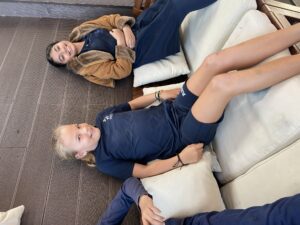Year-to-Date: 205.7; Feb 2023: 38.2; Last Week: 38.3
Every morning as students arrive on campus and make their way into the G5 learning environment, I display an image or show a video. Students see, think, and wonder. This makes for deep and meaningful connections later in the day during literacy or unit of inquiry. As students have become more and more curious about all manner of space–including moon landing projects, I have become more of a researcher. For example, how much space did the astronauts actually have in the modules? Or, when might astronauts travel back to the Moon?
This morning, students moved about a space that was approximately the size that astronauts used in modules for moon landing projects. (It’s roughly four square meters by diameter on the ground and 16 cubic meters altogether.) Although the size is slightly exaggerated, the space contained within our plenary session meeting space works well. As described by students, they were brave and disciplined and courageous. Granted, the G5 learning space does not have all of the systems and equipment and noises and smells and danger present in the module.
Astronauts don’t travel for the peculiarities of travel; they travel for the views. Teachers, chaperones, and students will have an opportunity to view the night sky through a large-ish telescope with commentary by an astronomer next week. As I remarked to students, I still remember the first time that I was lucky enough to view a gas giant through a telescope with an amateur astronomer–a hobbyist. May these experiences continue to inspire wonder in our students!


